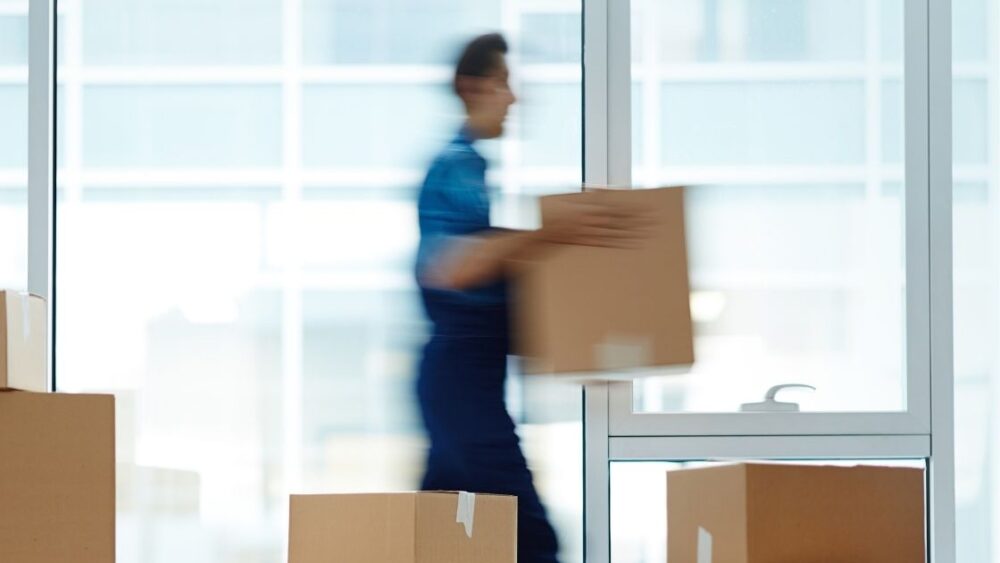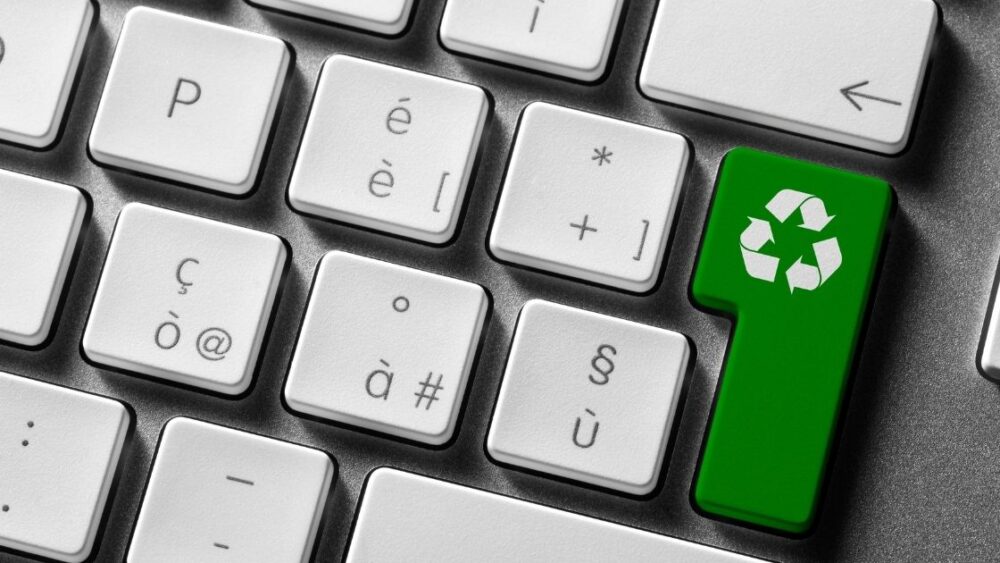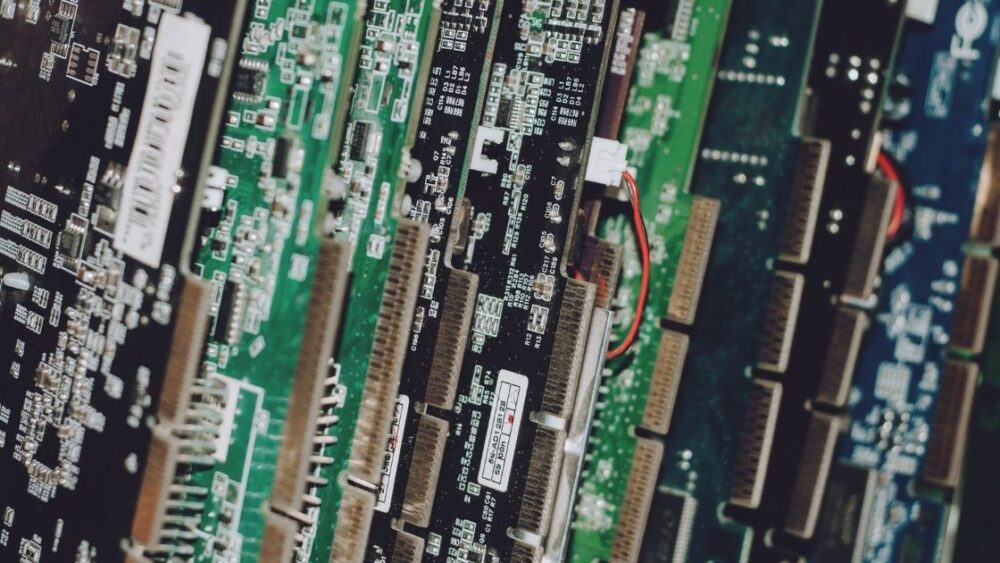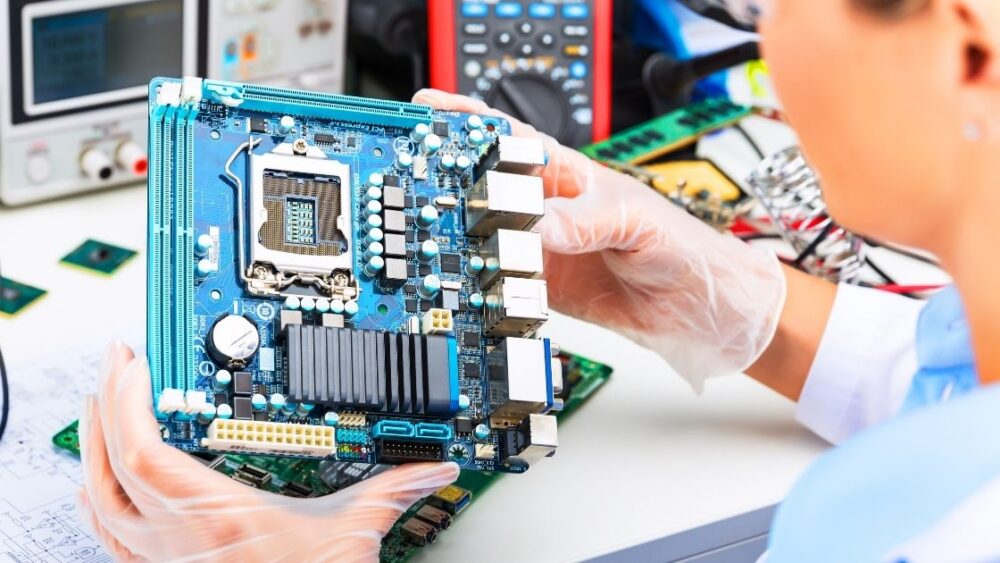WATCH: BATTERY DISPOSAL STARTS WITH GETTING PACKAGING RIGHT
Taking shortcuts is not an option when you deal with battery disposal. Our new instructional video will keep packaging on track.
We are all about making life easy for our customers. So, we created an informative video to show a crucial step in getting battery disposal right. Yes, we’re talking about how to package batteries for transport. This is a process that cannot be left to chance.
Read MoreYES, COMPUTER RECYCLING PICKUP REALLY CAN BE EASY
How do you turn computer recycling pickup into a flawless routine? Look to your electronics recycler for help.
Late arrivals, confusion, inadequate pickup equipment. Many companies are dealing with issues on computer recycling pickup day. That’s unfortunate since it really shouldn’t be a hassle.
What does the ideal pickup process look like? We’ll go through the major telltale features in this post.
Packaging: instructions and materials are easily available
It takes more than guesswork to know how to package IT assets ready for corporate electronic recycling. Yet, the issue is important from a regulatory perspective (shipping batteries, for instance). And it’s also important from the perspective of preserving value; if the assets were intact when you packaged them but they arrive broken, they will be that much harder to resell.
In this situation, your electronics recycler has a crucial role to play. First of all, no recycler should count on a business to keep an array of packaging materials in-house at all times. We know space is typically tight and storing gaylord boxes and other necessary items is rarely feasible. This is especially true for smaller sites. At the same time, the unavailability of packaging materials can slow down pickup and cause retired assets to accumulate.
So, what’s the solution?
We have found a quick and easy way to help clients prepare. To improve the process for a large OEM, for example, we prepared an online supply request form that enabled sites to request next-day delivery of gaylord boxes, pallets, packaging tape, and shrinkwrap (you can never have too much of the latter). The speedy delivery means sites can easily package items and schedule a pickup for the following day.
In addition, we provide detailed instructions to make sure your regulatory obligations are met and your assets arrive at our facility in great condition. In sum, to turn computer recycling pickup into a flawless routine (or pick up of any IT assets for that matter), convenient access to packaging is step one.
Preparation: Nothing left to chance
When preparation falters, prepare for a potential logistical nightmare. Again, your recycler should be at your service to help you sort it all out in advance of pickup day.
As we chronicled in this case study, we came to the aid of a global OEM which struggled with too many recyclers and procedures. For example, in that case, electronic waste recycling staff spent a lot of time sorting out what items should be sent to a recycler, which recycler should receive them, and what documents — such as certificates of recycling and asset lists — they should collect. The confusion left the process vulnerable to error.
Similarly, an unprepared electronics recycling partner can add to the confusion. If your partner sends the wrong pick-up equipment, fails to take site variations into account, and neglects to show up at the agreed time, odds do not favor a successful completion of the job.
So, how can computer recycling pickup day run smoothly?
The answer really starts with your electronics recycler. What kind of procedures do your recycler employ to eliminate the risk of mishaps? To pull an example from our own practices: When it comes to the OEM mentioned above, we created an intuitive pickup request form, tailored around the needs of each site.
The form used branching logic to filter out questions that did not pertain to the site at hand. For instance, a form designed for a site with no loading dock included no questions on whether the recycler would need a liftgate or enter through an elevator since they would be irrelevant. The form also let the client site identify the types of electronics that would be sent. As a result, it allowed us to help the site determine how to safely ship the items and to provide guidance on specific packaging materials.
All in all, the customized pickup request forms along with the forms for next-day-supply delivery transformed the day-to-day work at the sites. Backups and disorder gave way to swift preparation and shipping of retired assets.
How can we help you perfect computer recycling pickup? Don’t hesitate to reach out. We offer a full spectrum of corporate electronic recycling services.
Keep reading
The most important facts about computer recycling
Why it pays to recycle computer parts
INTERVIEW: GER PRESIDENT ON THE IMPORTANCE OF PROPER E WASTE DISPOSAL
American Recycler did a story on the ever-evolving challenges of e waste disposal — and turned to GER President Kristina Picciotti for answers
The e waste stream in the U.S. and throughout the world is becoming larger each year. What can we do to tackle it? American Recycler interviewed our own Kristina Picciotti, CEO of Global Electronic Recycling, to find the answers to the growing challenge of e waste disposal.
Read More10 TOP POSTS ON ELECTRONIC RECYCLING (LOTS OF USEFUL INFO)
From R2-recycling insights to our take on the year’s most infamous data breach case, let us present the top electronic recycling blog posts of 2021.
The countdown is on and we’re not only talking about the new year. Since the launch of the Global Electronic Recycling blog in March, we have published one post a week. Now, it’s time to sum up and take stock. Which topics piqued the interest of readers the most?
10, 9, 8…let’s cue the top 10 winners of electronic recycling blog posts in 2021.
10. How to turn laptop recycling into a potential revenue stream
One of your biggest company woes can, if you take the right steps, turn into a potential revenue stream. Among all your end-of-life electronic equipment, you may not be aware that one piece, in particular, is in especially high demand in secondary markets — laptops. It can, in other words, pay to make sure you get laptop recycling right. Read the post here.
9. What it takes to be the Zappos of electronics recycling
No brand symbolizes ease of shopping, shipping, and returns as much as Zappos. The online shoe and clothing retailer has made customer service the hallmark of its brand. Wouldn’t you be intrigued if a B2B electronics recycling specialist applied the same principles to its client relationships? If you have e scrap awaiting recycling, why not make it easy on yourself and choose a Zappos-like experience instead of a major hassle? Read the post here.
8. For optimal IT asset recovery, consider alternatives to degaussing
Degaussing is a common practice to destroy discarded hard drives on site. The urge to be cautious is understandable. But, the process renders the drives unusable and, consequently, bad for recouping value in secondary markets. If increasing IT asset recovery is the goal, entrust the task of data sanitization to your electronics recycler. Read the post here.
7. Watch: E waste recycling — the Life Cycle of a Laptop
Do you know what corporate electronic recycling looks like put to practice? In this brand-new video, you get to follow the journey of a laptop, from the point of manufacturing to raw material recovery. You probably already have some understanding of where everyday items come from, but most of us are so far removed from the process that we might only have a rough idea for a lot of the products we use every day. Read the post and watch the video here.
6. Want to become a sustainability leader? Your corporate e waste strategy matters
Among corporate buzzwords, “sustainability” is here to stay. The drive to build a sustainable operation is not only a moral imperative, consumers also reward companies that show a real commitment to doing what’s right for the environment, according to several studies. Here’s a chance for your company to make a real impact, both from positioning yourself as a sustainability leader and reaping the financial benefits of strategic resource recovery. Read the post here.
5. Dealing with too many electronics recyclers, a global OEM took these steps to improve e waste management
A global operation is by its sheer size always challenging to manage. Hundreds of sites in different countries — all of different sizes and designed for different purposes — demand an organization in control of every piece of the puzzle. That’s why this leading Original Equipment Manufacturer (OEM) sought out Global Electronic Recycling for help to improve e waste management. The biggest headache that the OEM urgently had to address? The use of too many electronics recyclers. Read the post here and the case study.
4. When should you pursue hard drive shredding services?
Looking for hard drive shredding services? You’re in good company. Hard drive shredding is often the default option for many businesses. Some like the idea of knowing their end-of-life IT assets have been physically destroyed beyond repair. Others may be prevented by regulations to select another method that leaves resale on the table. Regardless of where you fall, it can be helpful to consider your options.
Read the post here.
3. E waste recycling 101: Watch this video to get started
What does it take to learn the basics about e waste recycling? Try 8 minutes. In this new video, we walk you through all you need to know to get started or to improve the way you recycle your retired electronic devices. Consider it your roadmap to maximizing value, reducing costs, and minimizing your environmental impact as you pursue what no modern and environmentally-conscious business can do without: e waste recycling. Read the post and watch the video here.
2. Evaluating ITAD companies and other lessons from the Morgan Stanley data breach
Trying to turn the decommissioning of retired IT assets into a “profit center” can have dire consequences. Just ask Morgan Stanley. Lawyers for the plaintiffs in a class-action lawsuit allege the financial services giant ignored industry standards when it cut loose its long-standing ITAD partner to save money. Instead, the firm chose the “poor man’s wipe” to sanitize its equipment. Read the post here.
Drum roll…and the most read electronic recycling blog post of 2021 is:
1. Watch: Why R2 recycling is so important
Nothing underscores the importance of R2 recycling more than the recent Morgan Stanley data breach. The multinational financial services company and investment bank terminated a contract with its trusted ITAD partner in favor of a company with no experience in the business of sanitizing end-of-life IT assets. Read the post and watch the video here.
What will rise to the top in 2022? You decide. Follow us here and on social media for the latest updates.
Bonus read: Take a sneak peek at our e-book that we have yet to cover on the blog — How E-Waste Can Make Your Company a Sustainability Leader
ELECTRONIC RECYCLING TRENDS TO WATCH IN 2022
Despite many challenges, these electronic recycling trends are poised to gain steam and show the impact of trying to create a circular economy.
How is the battle against e-waste going on the global stage? What are some key initiatives to stem the tide of retired electronics and improve corporate electronic recycling? Although the challenge is huge, progress is being made. And your business has a crucial role to play.
SO YOU NEED TO RECYCLE COMPUTERS? THE STEPS TO TAKE.
When it’s time to recycle computers, a few key decisions can make a big difference for value recovery, data protection, and more.
The number of PCs shipped in 2020 is truly staggering: 275 million. In the United States, 21.5 million units shipped in the third quarter of this year alone. Many of these units will take the place of older models. And that’s where we come in.
When your business needs to recycle computers, you need a responsible, reputable, and certified electronics recycler to get the job done right.
As the current year is winding down, you may be one of many businesses assessing practices, including how you recycle computers and other electronic data-storing devices.
Is your current computer recycling partner a good fit? Is the service prompt and reliable? Could you get a better return on retired electronic assets? Are you planning a computer refresh in the coming year that will demand a comprehensive recycling strategy for obsolete units?
The do’s and don’ts of computer recycling
Before we get any further, let’s take a look at what you should not do when recycling computers:
- Do it yourself: The decommissioning of computer equipment is not a job for a novice. In such a strictly regulated environment as electronics recycling, haphazard handling of data and careless disposition of toxic materials leaves your organizations vulnerable to fines and reputation-shattering events.
- Handle assets carelessly: Broken screens, damaged cases, etc., significantly reduce value in resale markets.
- Hire a non-certified partner: It leaves your company vulnerable to data theft, inappropriate disposal, regulatory fines, and more.
- Opt for degaussing hard drives: Unless required by regulation, this common practice ruins the hard drive and makes it impossible to refurbish and resell.
- Go for the lowest quote: There’s no getting around the fact recycling costs tend to correlate with the rigorousness of asset disposition
- Assume an in-house factory reset removes all sensitive data: Only certified data destruction can adequately make all data irrecoverable.
Now, let’s move on to what you should do. If you’re searching for an electronics recycling partner to recycle computers, keep the following in mind.
Look beyond cost and location
A convenient location and affordable quotes; it may seem like the ideal combination. The truth is, however, there are more important variables to take into account when selecting a partner to dispose of your obsolete electronics. A quote that comes in way below those of other contenders is more likely a warning sign that something is amiss.
Like we said above, recycling costs tend to correlate with the rigorousness of asset disposition — and data cleansing in particular. Although it certainly does not mean the highest quote automatically equals superior service, it is wise to beware of surprisingly low estimates. Another wise move: Don’t let location alone make the decision for you. You end up running the risk of working with someone who does not live up to far more important criteria.
Ensure the company is certified and follows industry best practices
Saying is not the same as doing. An electronics recycler that can offer no more than a promise should never make the cut. You need actual verification to back up any claims. In the realm of electronics recycling, the main certification to look for is R2, the industry standard for responsible electronics recycling (we recently published a post on this topic here.)
As far as data destruction goes, NIST 800-88 ensures your partner fully complies with the leading standard for data erasure. In other words, it enforces a process that renders access to target data on the media infeasible for a given level of effort.
Recycle computers with care
The job to maximize value recovery begins before the assets leave your facility. To put it differently, it means the way you store, handle, package, and prepare the assets for shipping could all impact resale value down the line. For instance, we routinely help our clients with the important job of getting packaging right. (For more info, watch this video on best practices on electronics recycling).
This brings us back to another piece of advice that we consistently share about the practice of degaussing hard drives. Some companies prefer to do this on-site before sending assets for recycling. The urge to be cautious is understandable. But you’re better off letting your certified electronics recycler assess regulations to determine whether degaussing is necessary.
If you’re not restricted by a federal requirement for degaussing clearance-level information, opt for other methods. Your recycler can deliberately, permanently, and irreversibly destroy the data stored on a memory device — while leaving them in good condition for resale and optimized IT asset recovery.
Final word
Can we help you kick off 2022 with a new, better electronics recycling strategy? Whether you need to recycle computers, revise your entire approach to e waste recycling, or want to know how you can turn obsolete IT assets into a sustainability advantage, let’s talk. Corporate electronic recycling shouldn’t be a hassle.
Read more
R2-CERTIFIED RECYCLERS: WHAT SETS THEM APART
When recycling electronics, make sure you work with R2-certified recyclers. Here’s why.
Although most companies have heard of the R2 certification, not everyone may fully appreciate how important it really is. When a multinational corporation like Morgan Stanley can neglect to hire R2 certified recyclers — a decision that turned into a class-action lawsuit, it goes to show the message can’t be driven home often enough.
Read MoreWATCH: E WASTE RECYCLING — THE LIFE CYCLE OF A LAPTOP
To fully appreciate the value of e waste recycling, watch this video.
Do you know what e waste recycling looks like put to practice? In this brand-new video, you get to follow the journey of a laptop, from the point of manufacturing to raw material recovery.
Read MoreWHY IT PAYS TO RECYCLE COMPUTER PARTS
When your business recycles computer parts and other electronic equipment, the impact is counted in big numbers.
The United States generated 6.92 million tons of e waste in 2019. Yet, it only recycled 15% of the materials. If you also consider the value of raw materials in those discarded electronics added up to $7.49 billion, you can easily see the waste is staggering.
Read More









